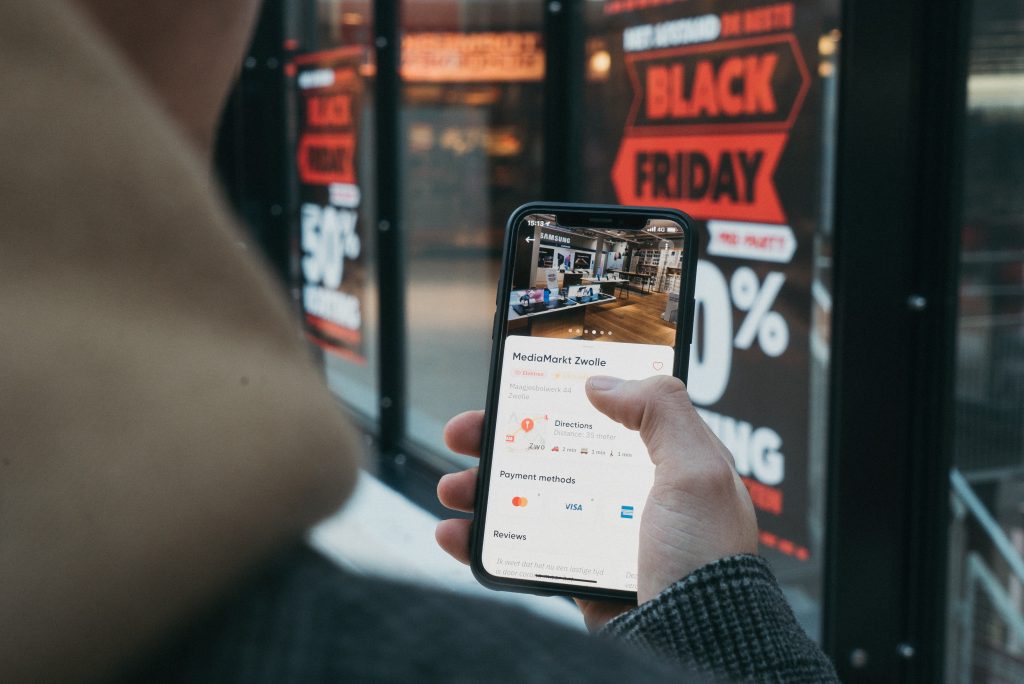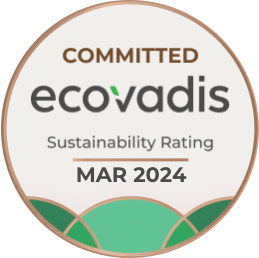The eCommerce landscape is constantly evolving with emerging trends and new technologies continually coming into existence. For marketers that want to stay ahead of the game its important to keep abreast of these innovations and what impact they are having on the wider industry. Change can, of course, bring opportunities as well as threats, but regardless of whether a change is perceived as a positive or a negative, one thing that’s certain is that being aware that change is happening is the most important starting point.
In this blog, we’ll discuss some of the upcoming trends likely to transform eCommerce in 2024. From concerns about privacy to ChatGPT, 2024 is sure to bring a whole host of technological surprises and new customer demands – so make sure you’re ready for them.
Artificial Intelligence (AI)
It feels like Artificial Intelligence (AI) has already taken the world by storm (and not just the world of online retail), but we’re yet to see what it’s truly capable of and the wider impact it will have on businesses across industries in the long run. In 2024, AI will undoubtedly continue to evolve beyond the ubiquity of tools such as ChatGPT, with 80% of businesses aiming to invest 50% more in generative AI over the next six months. After all, AI has the power to boost employee efficiency and provide new insights into data, but one of the key ways that AI will transform eCommerce in the coming year is through personalisation.
Personalisation can have a huge impact on user experience when shopping online, as it can provide content tailored to each individual user. AI technology can assist with this using its ability to machine learn insights from specific data sets, allowing retailers to create a shopping environment based on individual user data. Attributes such as previous purchases, browsing history, user location or other personal information can be interwoven to create higher satisfaction rates and ultimately, higher conversion rates. Moreover, AI can be deployed across multiple activities, from ad-creation to live chat, and can analyse customer data (whether that’s 1st, 2nd and/or 3rd party) to create a bespoke experience that will create a much higher propensity to achieve the action you want users to complete.
Virtual and Augmented Reality
While augmented and virtual reality are not new concepts, it’s predicted that spending on this type of technology will grow by 78.3% compared to 2019. Both AR and VR help to create immersive experiences for customers, making them attractive to eCommerce businesses looking to provide users with a more well-rounded and futuristic experience. While it’s true that shopping online is proving to be more and more popular every year, retailers must continue searching for innovative ways to elevate the virtual user experience and help to close the gap between buying online and shopping in-person in physical stores.
We’ve already seen AR help customers to visualise their purchases in their home, as with Dulux’s Visualiser App, while IKEA’s virtual showrooms are a shining example of how VR can be used to bring a sense of physicality to the online world. However, in 2024 we can expect to see more of a convergence of AR and VR into more of a Mixed Reality. This means more interactivity and even greater immersion, bringing together highly customisable digital spaces that feel just like the real thing.
Social Media Sales
Using social media as a marketing tool shows no signs of slowing down, with around 77% of small businesses having some kind of presence across social platforms. From sharing product launches to influencer marketing, there are a whole host of ways that social media can be used to boost brand awareness and sales. But social media platforms have been quick to make the buying process even more intuitive for users by integrating online shops within the platforms themselves, including Instagram Shopping and TikTok Shop to name a few.
While it’s true these features have been around for a few years now, businesses are expected to make more use of them over the next 12 months. However, marketers should learn from past mistakes of other businesses and work to build a sense of trust when promoting their products. Leveraging user-generated content (UGC) as well as formulating a comprehensive brand awareness strategy could help to combat the concerns of some users when it comes to product trustworthiness.
Voice Searches
An increasing number of online users are turning to voice commands when searching online. At the moment, just 24% of people use voice search for online shopping, but 71% would rather surf the web using spoken words rather than typing. This makes it all the more important for eCommerce businesses to integrate voice search patterns into their SEO strategies, ensuring that their products are easy to find even when potential customers are using voice commands.
To build voice search into your SEO plan, consider relevant keywords, how well your pages are ranking and whether you’re capturing longer-tail questions that people may be more likely to ask when speaking out loud as opposed to typing. For instance, a user may be more inclined to ask Siri “which coffee maker should I buy on a budget?” rather than typing in “budget coffee maker” to a Google search bar.
Sustainability
Sustainability has been a buzzword at the forefront of both business and consumer minds for a few years now, but 2024 is set to be the year where there needs to be real change. Consumers are starting to be more and more aware of how buying products online and returning them is affecting pollution, frown upon unnecessary plastic packaging, and dismiss greenwashing tactics that may have held their attention in the past.
Even eCommerce businesses currently using recyclable packaging may need to make changes and consider bringing in carbon-neutral envelopes and fully biodegradable bags. More businesses may also begin offering reusable containers or opt for refill schemes to reduce the amount of waste they produce, while others are looking to clamp down on the way that online returns are costing not only the environment but their finances as well.
Returns are a fact of life for most eCommerce businesses, but they could be reduced by making customers less likely to want to ship their products back to you in the first place. This can be done by improving the information on your website as well as adding a small charge for return shipping if you currently offer free returns. Be transparent about the steps you’re taking and make it clear that sustainability is at the forefront of any changes.
Similarly, increased transparency about what happens to returns, as well as waste, will become even more valuable, if not expected, especially in light of the growing concerns with fast fashion and the number of products being left in landfills. This kind of initiative will not suit every business and some businesses will be cautious about any change which could have a negative commercial impact. However, in the long run, it could reduce returns without impacting overall sales whilst also helping to save the planet.
Automation
So many manual tasks could be automated in the world of marketing, yet a lot of businesses are still doing things the long way, effectively wasting the time of their employees which could be used to do more productive tasks. One of the most attractive ways to automate in the coming year will be by using predictive AI to parse data and forecast how customers might behave depending on a wider range of factors, such as their position in the funnel or the time of year. AI will also be able to automate many social media activities, helping businesses generate engaging content that’s in line with current issues and discussions.
Similarly, robotics technology powered by AI will no doubt be even more present in both warehouses and on shopfloors, speeding up packing and processing to make sure customers get the products they need in the fastest time possible. Coupled with the expansion of delivery via drone by Amazon in 2024, you can quickly see how the entire order process will become almost (if not fully) automated one day.
In addition to fulfilment, we can also expect to see a continuation of automation through scheduling software to ensure a cohesive approach to omnichannel marketing. With the online world becoming ever more interconnected, it’s essential to optimise your business presence across more than one channel by ensuring that all your content is always up-to-date and reflects your key messages.
Subscriptions and Loyalty Schemes
The subscription model is an aged old method for businesses to create customer loyalty and dependable revenue streams. However, it’s only natural for it to evolve over time, especially as it’s grown by over 435% across the past decade. The need for flexibility in subscriptions will become even more apparent in 2024, with many businesses offering more options for customers to amend, pause or cancel their subscriptions rather than forcing them into a fixed-term contract which we know from research is unpopular with consumers
We can also expect to see customer loyalty rewarded to a greater extent than it already is, with more businesses offering special offers, discounts or limited products to their subscribers or repeat purchasers. The past few years have been difficult for a number of industries, and in a time when many people may be focused on cutting down costs, giving customers a reason to remain loyal to a particular brand will become paramount.
Customer Service and Support
It is no coincidence that most successful online businesses put customer service at the forefront of everything they do, and with 58% of shoppers happy to pay a higher price for high-quality support, it’s easy to see why retailers would prioritise serving their customers well. While chatbots have already made their mark on how eCommerce businesses approach customer service, they’re set to be supercharged by AI in the coming year, improving user experiences and delivering a more personalised and attentive level of care. This will also take the pressure off customer service teams, as they won’t have to answer as many rudimentary questions and can focus on resolving bigger and more complicated customer issues.
It’s also predicted that, alongside an increase in personalisation, a focus on human-centred customer service will lead the way for Conversational Commerce to make more of an appearance. This not only includes chatbots, but will also mean being able to more easily speak to a human via online chat if needed as well as integrating voice interactivity into search tools.
Privacy, Zero-Party Data and Fewer Cookies
Since the introduction of GDPR regulations, privacy has become a lot more important for both online retail businesses and consumers. However, in 2024, we can expect an even tighter focus on keeping customer data safe. One of the most significant changes that we know of currently is the gradual removal of third-party cookies on Google Chrome. While this is something that will initially only affect 1% of online users when testing begins, it could change the way that many eCommerce businesses gather data about consumers. As a result, there may be a greater focus on zero-party data collection and leveraging this to better understand consumer needs.
Zero-party data essentially refers to data that customers have intentionally shared with a business, for example through surveys or polls. This type of data allows users to feel more in control and provides businesses with more insights into preferences and thought processes amongst their audience.
APIs and the Internet of Things
The Internet of Things (IoT) is growing and becoming more and more a part of people’s daily lives. With 67% of users already using their mobile phone to shop, it makes sense that the natural progression would be to use other smart devices to make purchases as well. APIs will be a key part of helping businesses to make this shift, freeing their online stores of the restrictions of desktop and mobile devices, and allowing their products to be viewed and purchased from smartwatches and other gadgets. This shift is known as Headless Commerce and aims to make it easier to customise eCommerce stores by loosening the connection between the front and back end. It makes it much easier to build new interfaces, improves flexibility and allows your business to quickly evolve at the same speed as the market.
Greater Payment Flexibility
There have never been more ways to pay online than there are today and businesses that limit payment options in 2024 will be at risk of frustrating their customers and ultimately will lose out to competitors who are embracing a greater number of payment methods. And whilst every eCommerce store will have the option for customers to pay by credit or debit card, it should be by no means the only option, especially as entering card details can significantly slow down the checkout process. As a result, many stores already offer options such as PayPal, but the online payment landscape has since exploded to encompass countless buy-now-pay-later offerings as well as solutions like Apple and Google Pay. In fact, 49% of online users prefer to pay using a digital wallet compared with 20% that opt for their credit card.
Giving customers the maximum choice when it comes to payment methods will be key to improving the user experience at checkout, especially for mobile users who are often shopping on the move, perhaps without their credit or debit cards to hand. Not only will it speed up the conversion process, but in many circumstances, it allows users to feel more secure. Moreover, some customers may be reluctant to input card details online, but much more willing to use a third party payment provider that offers them a greater sense of security, particularly if they can make payments in instalments (BNPL), which is now something customers look for even when making smaller, micro-transactions.
Selling on Livestreams
Selling on Livestreams (also known as Live Selling or Live Commerce) is actually what it sounds like: online retailers showcasing their products via a live stream, most often publishing these on social media platforms. Viewers can interact by asking questions and/or by making a purchase during the live stream itself. It is often used when showcasing products which benefit from a live demonstration of how they work or showing how effective they are. Live shopping is starting to steadily grow and has already taken off in some countries such as China, leading global businesses to consider tapping into this new way of reaching customers.
Whilst live stream shopping is in the grand scheme of things still a minority tactic it’s something that will likely to start making more of an appearance in 2024. After all, live streams provide customers with a more intimate and interactive user experience, allowing them to ask questions in real-time and engage with other users simultaneously. Selling via live streams, or even using them as a marketing tactic, has the potential to blend well with creating an immersive shopping experience using technologies like augmented reality.
Final Thoughts
In 2024, eCommerce seems set to be shaped by rapid improvements in technology, an increasing need for transparency, and a focus on the customer above all else. We expect to see businesses not only changing their processes behind the scenes, but improving their offering across their websites and changing the way that they interact with their audiences. In an increasingly online world, the need for connection and a human touch has never been more essential, and new technologies seem to be the way to achieve this transformative, immersive shopping experience.





